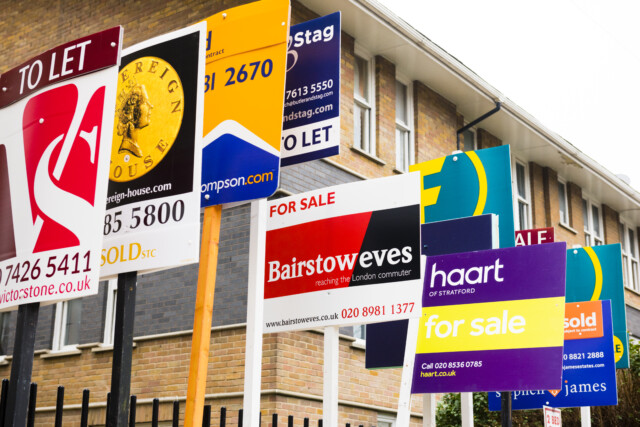
THOUSANDS of homebuyers are set to benefit from a cut to stamp duty.
In today’s mini-budget, Chancellor Kwasi Kwarteng’s is expected to announce plans to cut stamp duty in a bid to boost economic growth, according to reports.
Stamp duty cut to help thousands more first-time buyers
It is hoped that cutting the levy will encourage growth by allowing more people to move property and get more first-time buyers on the housing ladder.
Stamp duty land tax (SDLT) is a lump sum payment you have to make when purchasing property over a certain threshold.
Under the current system no stamp duty is paid on the first £125,000 of any property purchase. The threshold at which the duty is paid for first-time buyers is £300,000.
How much buyers pay depends on the price and type of property, including if it’s residential use or non-residential or mixed-use.
An increase to the thresholds at which you pay the tax could save some buyers thousands of pounds.
The mini-budget is also likely to include a freeze to corporation tax and see the cap on bankers bonuses scrapped.
Yesterday, The Treasury confirmed that a 1.25% point increase to National Insurance will be scrapped from November 6.
The hike was first introduced in April and pushed up rates to 13.25% and 3.25%.
The move will save workers an average of £135 a year in 2022, rising to £330 in 2023-24.
We explain the exact amount your pay will rise to in November here.
Stamp duty can be difficult to understand, below we explain everything you need to know.
What is stamp duty?
Stamp duty is a payment you’ll need to make if you’re buying a property or piece of land.
You pay the tax when you:
- buy a freehold property
- buy a new or existing leasehold
- buy a property through a shared ownership scheme
- are transferred land or property in exchange for payment, for example you take on a mortgage or buy a share in a house
The rate a buyer has to fork out depends on the price and type of property.
You only pay when you hit a certain threshold- currently, this is £125,000 for residential properties.
The threshold for non-residential land and properties is £150,000.
If you buy a property for less than these thresholds, then you don’t have to pay the tax.
Back in 2020 the Treasury temporarily raised the stamp duty threshold from £125,000 to £500,000 for property sales in England and Northern Ireland.
But the PM’s plans to scrap could change these thresholds again.
Who pays for stamp duty right now?
Home buyers always pay for stamp duty, not the seller.
This is often done through a solicitor on your behalf as part of the buying process, according to HomeOwnersAlliance.
Home buyers have fourteen days from the date of purchasing a property to file a return to HMRC with any stamp duty due.
Not everyone pays the same amount.
If you are a first-time buyer you can get a discount if the following applies to you:
- You, and anyone else you’re buying with, are first-time buyers
- The purchase price is £500,000 or less
This rule came in on July 1, 2021. You’ll also be eligible for this discount if you bought your first home before July 8, 2020.
How much you pay depends on whether the land or property is residential use or non-residential or mixed-use.
There’s a long list of different types of non-residential or mixed-use properties, such as shops, offices and agricultural land, which you can check here.
The government’s Stamp Duty Land Tax Calculator can be used to understand what you should pay.
What else is set to be announced in the mini budget?
The government claims it understands the pressure families currently face with the soaring cost of living.
They say today’s mini budget, which takes place in the Commons, will provide much needed relief on household finances.
The Chancellor is expected to slash the Health and Social Care Levy that was brought in under Boris Johnson’s administration last April.
During the Tory leadership campaign Ms Truss said she hated the national insurance hike and vowed to get rid of it.
Brits will also still continue to receive the cost of living payments announced last spring.
Mr Kwarteng may announce that the basic rate of income tax will be slashed from 20p to 19p. Although, some reports have suggested it may be left until a full Budget later this year.
A planned rise in corporation tax for April next year is likely to be binned today.
It comes after the PM confirmed a multi-billion package to save typical Brits £1,000 by protecting them from crippling global gas costs.
Bills were set to rise to £3,500 in October and more than £6,000 next April in a terrifying prospect for most households.
But the new enegry price guarantee means that a typical family paying will pay no more than £2,500.
Cost of living payments: what you need to know
- All the key dates for cost of living payments revealed
- Every household will get a £400 cost of living payment to help with energy bills
- See the full list of benefits eligible for £650 cost of living cash
- Here’s free cash you can get if you DON’T qualify for the £650 cost of living payment
- Millions of pensioners will get a £300 cost of living payment this winter
- Disabled Brits will get £150 this September
- Parents can get up to £200 towards school uniform costs







